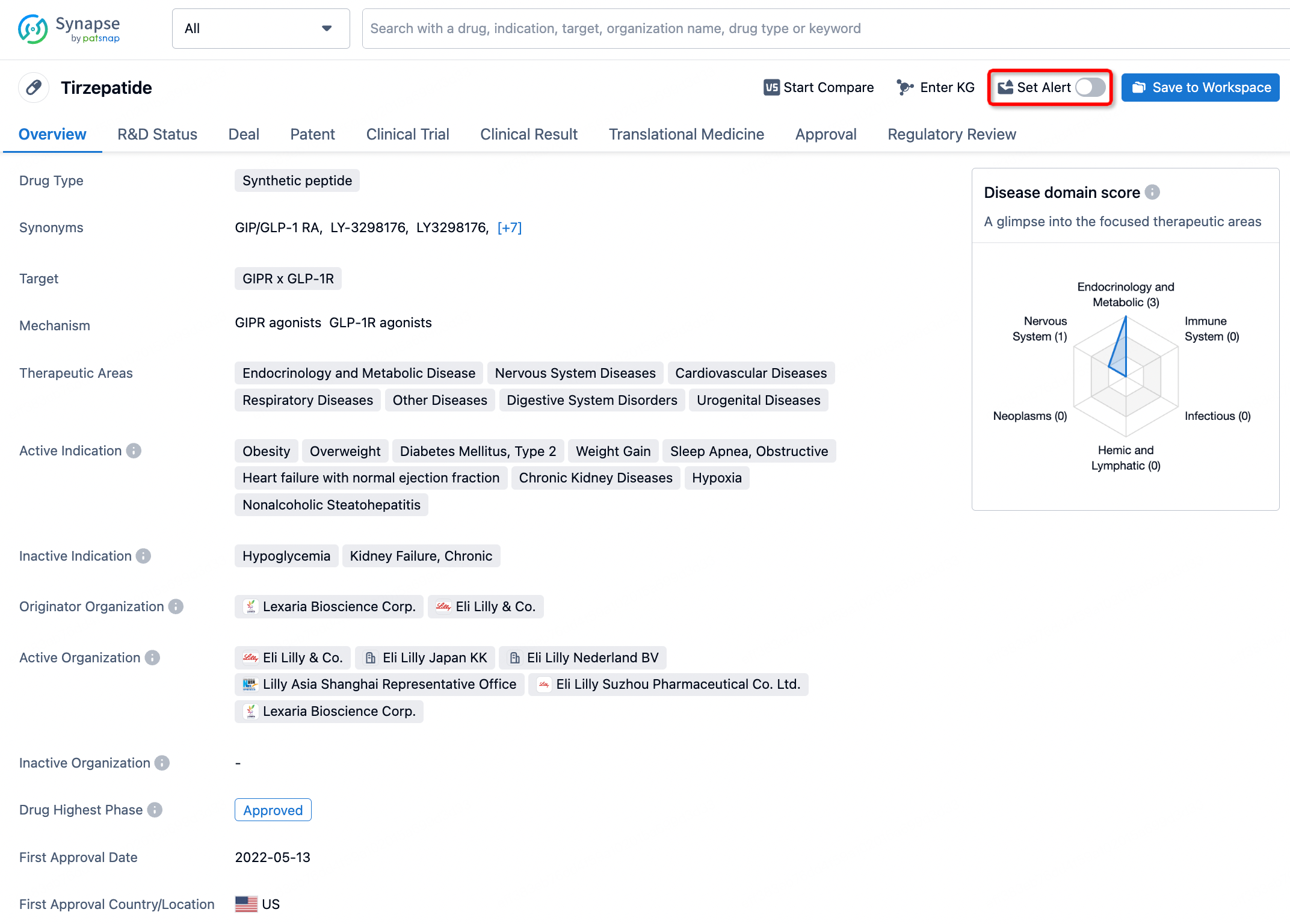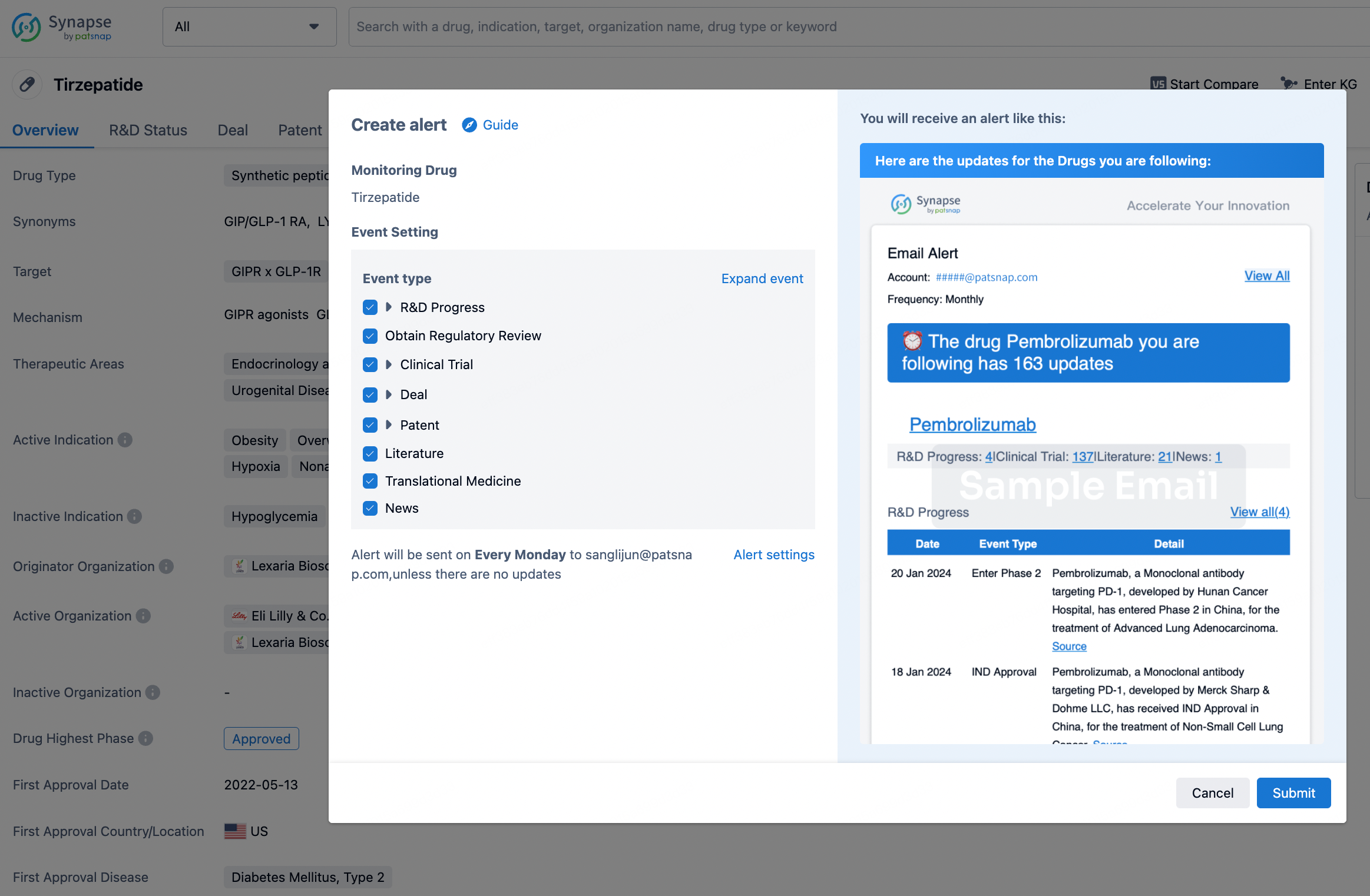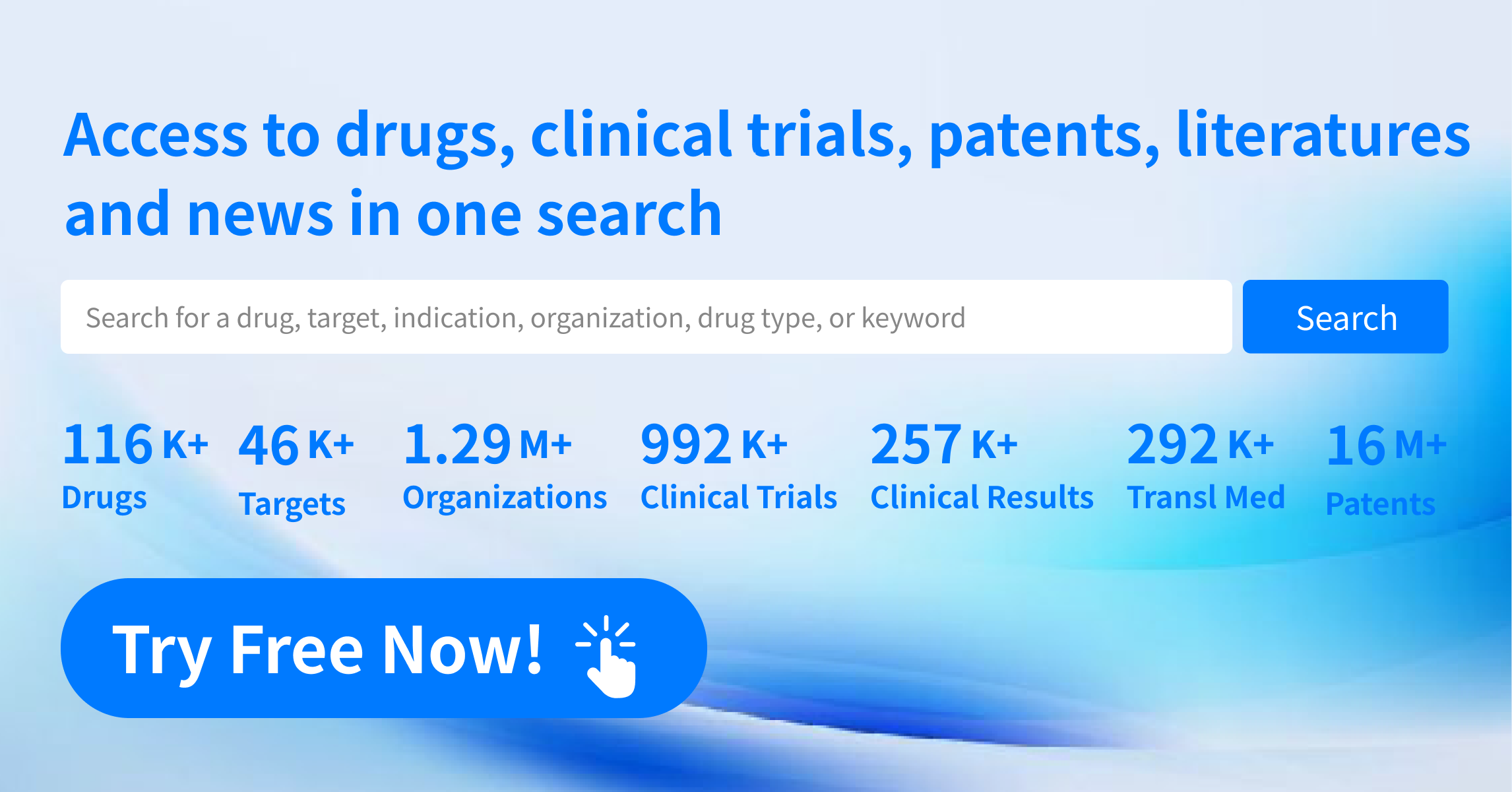Request Demo
What is Gefarnate used for?
15 June 2024
Gefarnate is a fascinating compound that has garnered attention in the pharmaceutical world for its unique properties and therapeutic potential. Known by its trade names like Gefarnate and Staltor, this medication has been the focus of various research initiatives. It is a drug primarily utilized for its gastroprotective effects, meaning it helps in safeguarding the gastrointestinal lining. Research institutions around the globe are actively investigating its multi-faceted benefits, particularly in the treatment of peptic ulcers and other related gastrointestinal conditions. The drug belongs to a class known as gastroprotective agents, aimed specifically at bolstering the natural defenses of the stomach lining against harsh gastric acids and other irritants. As it stands, research into Gefarnate is ongoing, with clinical trials and studies continually exploring its efficacy, safety, and potential new applications.
Gefarnate Mechanism of Action
The mechanism of action for Gefarnate is both intricate and impressive. Essentially, it works by enhancing the mucosal barrier in the gastrointestinal tract. This barrier is a critical component in protecting the stomach lining from the corrosive effects of gastric acid and digestive enzymes. Gefarnate stimulates the production of mucus and bicarbonate, two substances that are vital for maintaining the integrity and function of the mucosal barrier. Additionally, it promotes the generation of prostaglandins, which are lipid compounds that play a key role in protecting the stomach lining by increasing blood flow and facilitating the repair of damaged tissues. By augmenting these natural protective mechanisms, Gefarnate effectively reduces the risk of ulcer formation and accelerates the healing process of existing ulcers.
How to Use Gefarnate
The administration of Gefarnate is relatively straightforward. It is typically taken orally, in the form of tablets or capsules. The dosage and frequency of administration depend on the specific condition being treated, as well as the patient’s overall health and response to the medication. Generally, it is recommended to take Gefarnate with meals to maximize its gastroprotective effects and to minimize any potential gastrointestinal discomfort. The onset of action can vary, but many patients begin to notice relief from symptoms within a few days to a week of starting the medication. It is crucial to follow the prescribing doctor's instructions carefully and to not discontinue the medication prematurely, even if symptoms begin to improve. Completing the full course of treatment ensures the best possible outcomes and reduces the likelihood of recurrence.
What is Gefarnate Side Effects
Like all medications, Gefarnate comes with a profile of potential side effects. Fortunately, it is generally well-tolerated by most patients, but it is not entirely without risks. Common side effects include gastrointestinal disturbances such as nausea, vomiting, diarrhea, or constipation. These symptoms are typically mild and often resolve on their own as the body adjusts to the medication. However, more serious side effects can occur, although they are rare. These may include allergic reactions, characterized by symptoms such as rash, itching, swelling, severe dizziness, or trouble breathing. If any of these serious side effects occur, it is imperative to seek medical attention immediately. Additionally, there are certain contraindications for the use of Gefarnate. It should be used with caution in patients with known hypersensitivity to the drug or its components. Pregnant or breastfeeding women should consult their healthcare providers before starting Gefarnate to ensure it is safe for them and their babies.
What Other Drugs Will Affect Gefarnate
When it comes to drug interactions, Gefarnate must be used with caution. Certain medications can influence its efficacy or increase the likelihood of adverse effects. For instance, antacids, which are commonly used to relieve heartburn, can potentially reduce the absorption and effectiveness of Gefarnate. It is generally advisable to take Gefarnate at least one hour before or after antacids to avoid this interaction. Other medications that may affect Gefarnate include proton pump inhibitors (PPIs) and H2-receptor antagonists, which are also used to treat gastrointestinal conditions by reducing stomach acid production. Since Gefarnate works by enhancing the mucosal barrier rather than reducing acid production, using it in conjunction with these medications should be carefully monitored by a healthcare provider to ensure optimal therapeutic outcomes.
Moreover, dietary supplements and herbal products can also interact with Gefarnate. For example, supplements containing calcium or magnesium can bind to Gefarnate in the digestive tract, hindering its absorption and effectiveness. Patients should inform their healthcare providers about all the medications, supplements, and herbal products they are taking to avoid potential interactions and ensure that their treatment plan is safe and effective.
In conclusion, Gefarnate is a valuable drug in the realm of gastroprotective agents, with a well-defined mechanism of action that involves enhancing the mucosal barrier of the gastrointestinal tract. Its administration is straightforward, yet it requires careful adherence to prescribed guidelines to ensure its efficacy and minimize side effects. While generally well-tolerated, Gefarnate does come with potential side effects and contraindications that must be considered. Moreover, potential drug interactions highlight the importance of comprehensive patient education and communication with healthcare providers. As ongoing research continues to unveil more about Gefarnate, it remains a promising option for individuals suffering from gastrointestinal conditions, offering hope for relief and improved quality of life.
Gefarnate Mechanism of Action
The mechanism of action for Gefarnate is both intricate and impressive. Essentially, it works by enhancing the mucosal barrier in the gastrointestinal tract. This barrier is a critical component in protecting the stomach lining from the corrosive effects of gastric acid and digestive enzymes. Gefarnate stimulates the production of mucus and bicarbonate, two substances that are vital for maintaining the integrity and function of the mucosal barrier. Additionally, it promotes the generation of prostaglandins, which are lipid compounds that play a key role in protecting the stomach lining by increasing blood flow and facilitating the repair of damaged tissues. By augmenting these natural protective mechanisms, Gefarnate effectively reduces the risk of ulcer formation and accelerates the healing process of existing ulcers.
How to Use Gefarnate
The administration of Gefarnate is relatively straightforward. It is typically taken orally, in the form of tablets or capsules. The dosage and frequency of administration depend on the specific condition being treated, as well as the patient’s overall health and response to the medication. Generally, it is recommended to take Gefarnate with meals to maximize its gastroprotective effects and to minimize any potential gastrointestinal discomfort. The onset of action can vary, but many patients begin to notice relief from symptoms within a few days to a week of starting the medication. It is crucial to follow the prescribing doctor's instructions carefully and to not discontinue the medication prematurely, even if symptoms begin to improve. Completing the full course of treatment ensures the best possible outcomes and reduces the likelihood of recurrence.
What is Gefarnate Side Effects
Like all medications, Gefarnate comes with a profile of potential side effects. Fortunately, it is generally well-tolerated by most patients, but it is not entirely without risks. Common side effects include gastrointestinal disturbances such as nausea, vomiting, diarrhea, or constipation. These symptoms are typically mild and often resolve on their own as the body adjusts to the medication. However, more serious side effects can occur, although they are rare. These may include allergic reactions, characterized by symptoms such as rash, itching, swelling, severe dizziness, or trouble breathing. If any of these serious side effects occur, it is imperative to seek medical attention immediately. Additionally, there are certain contraindications for the use of Gefarnate. It should be used with caution in patients with known hypersensitivity to the drug or its components. Pregnant or breastfeeding women should consult their healthcare providers before starting Gefarnate to ensure it is safe for them and their babies.
What Other Drugs Will Affect Gefarnate
When it comes to drug interactions, Gefarnate must be used with caution. Certain medications can influence its efficacy or increase the likelihood of adverse effects. For instance, antacids, which are commonly used to relieve heartburn, can potentially reduce the absorption and effectiveness of Gefarnate. It is generally advisable to take Gefarnate at least one hour before or after antacids to avoid this interaction. Other medications that may affect Gefarnate include proton pump inhibitors (PPIs) and H2-receptor antagonists, which are also used to treat gastrointestinal conditions by reducing stomach acid production. Since Gefarnate works by enhancing the mucosal barrier rather than reducing acid production, using it in conjunction with these medications should be carefully monitored by a healthcare provider to ensure optimal therapeutic outcomes.
Moreover, dietary supplements and herbal products can also interact with Gefarnate. For example, supplements containing calcium or magnesium can bind to Gefarnate in the digestive tract, hindering its absorption and effectiveness. Patients should inform their healthcare providers about all the medications, supplements, and herbal products they are taking to avoid potential interactions and ensure that their treatment plan is safe and effective.
In conclusion, Gefarnate is a valuable drug in the realm of gastroprotective agents, with a well-defined mechanism of action that involves enhancing the mucosal barrier of the gastrointestinal tract. Its administration is straightforward, yet it requires careful adherence to prescribed guidelines to ensure its efficacy and minimize side effects. While generally well-tolerated, Gefarnate does come with potential side effects and contraindications that must be considered. Moreover, potential drug interactions highlight the importance of comprehensive patient education and communication with healthcare providers. As ongoing research continues to unveil more about Gefarnate, it remains a promising option for individuals suffering from gastrointestinal conditions, offering hope for relief and improved quality of life.
How to obtain the latest development progress of all drugs?
In the Synapse database, you can stay updated on the latest research and development advances of all drugs. This service is accessible anytime and anywhere, with updates available daily or weekly. Use the "Set Alert" function to stay informed. Click on the image below to embark on a brand new journey of drug discovery!
AI Agents Built for Biopharma Breakthroughs
Accelerate discovery. Empower decisions. Transform outcomes.
Get started for free today!
Accelerate Strategic R&D decision making with Synapse, PatSnap’s AI-powered Connected Innovation Intelligence Platform Built for Life Sciences Professionals.
Start your data trial now!
Synapse data is also accessible to external entities via APIs or data packages. Empower better decisions with the latest in pharmaceutical intelligence.


